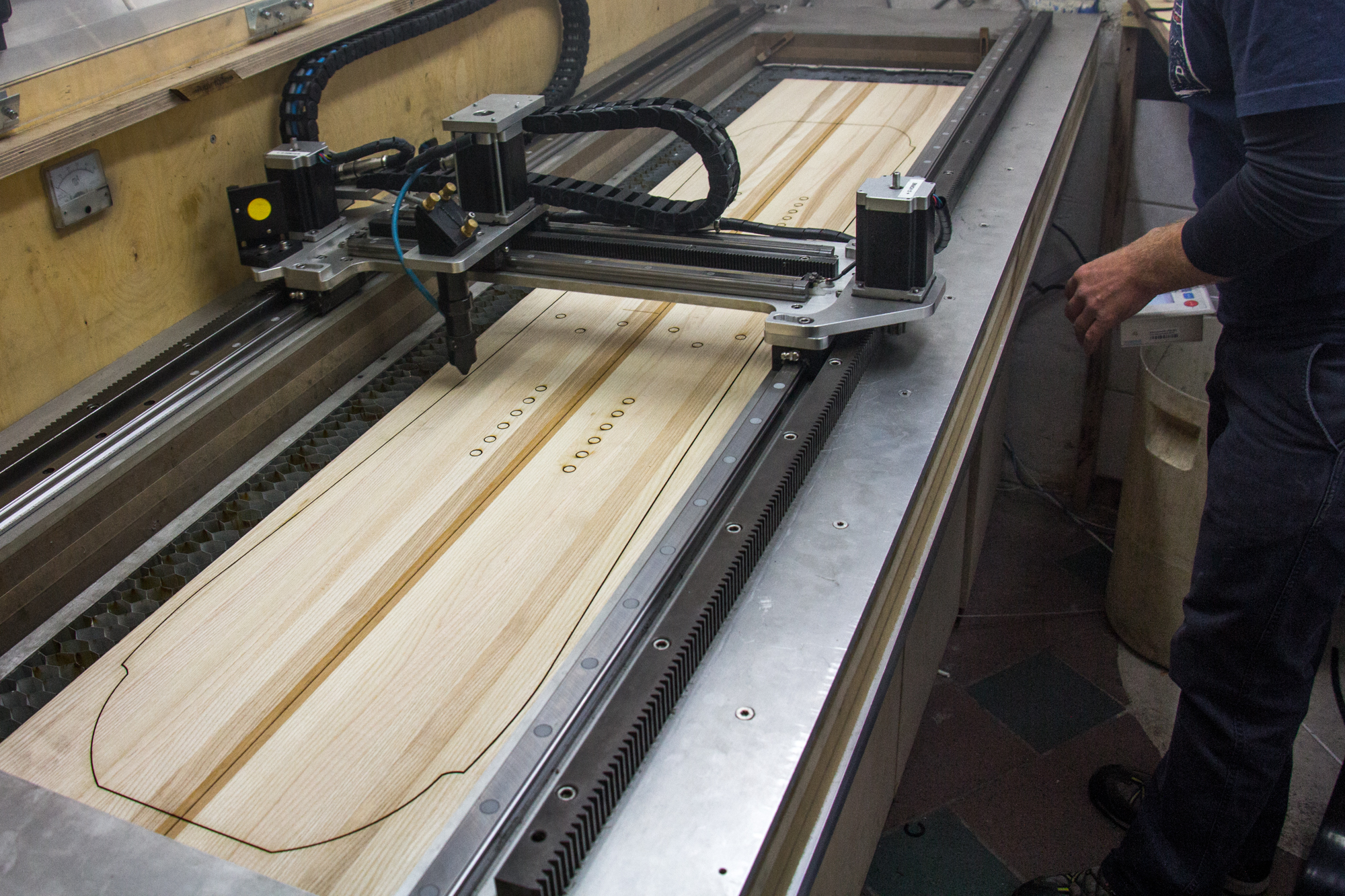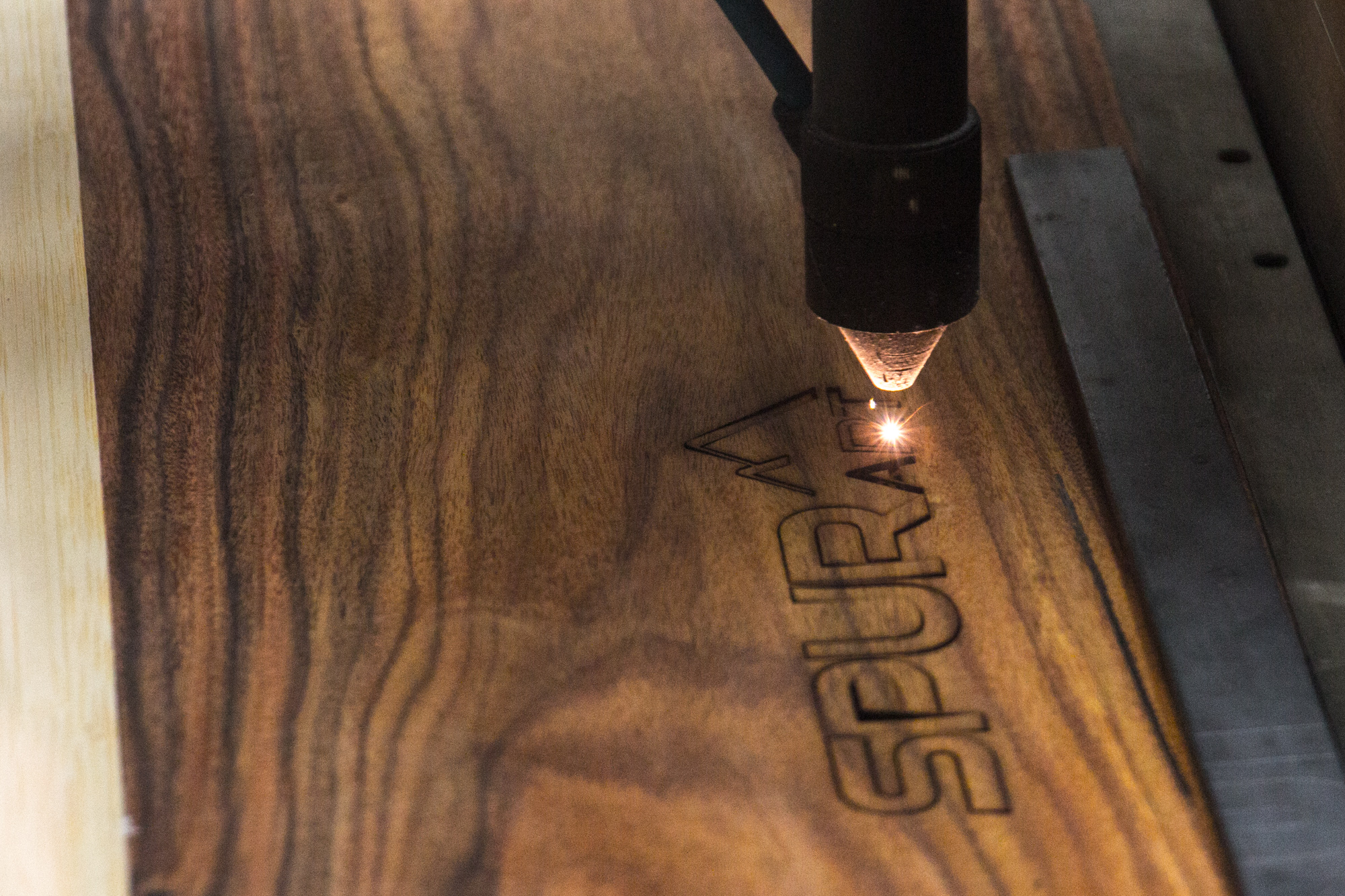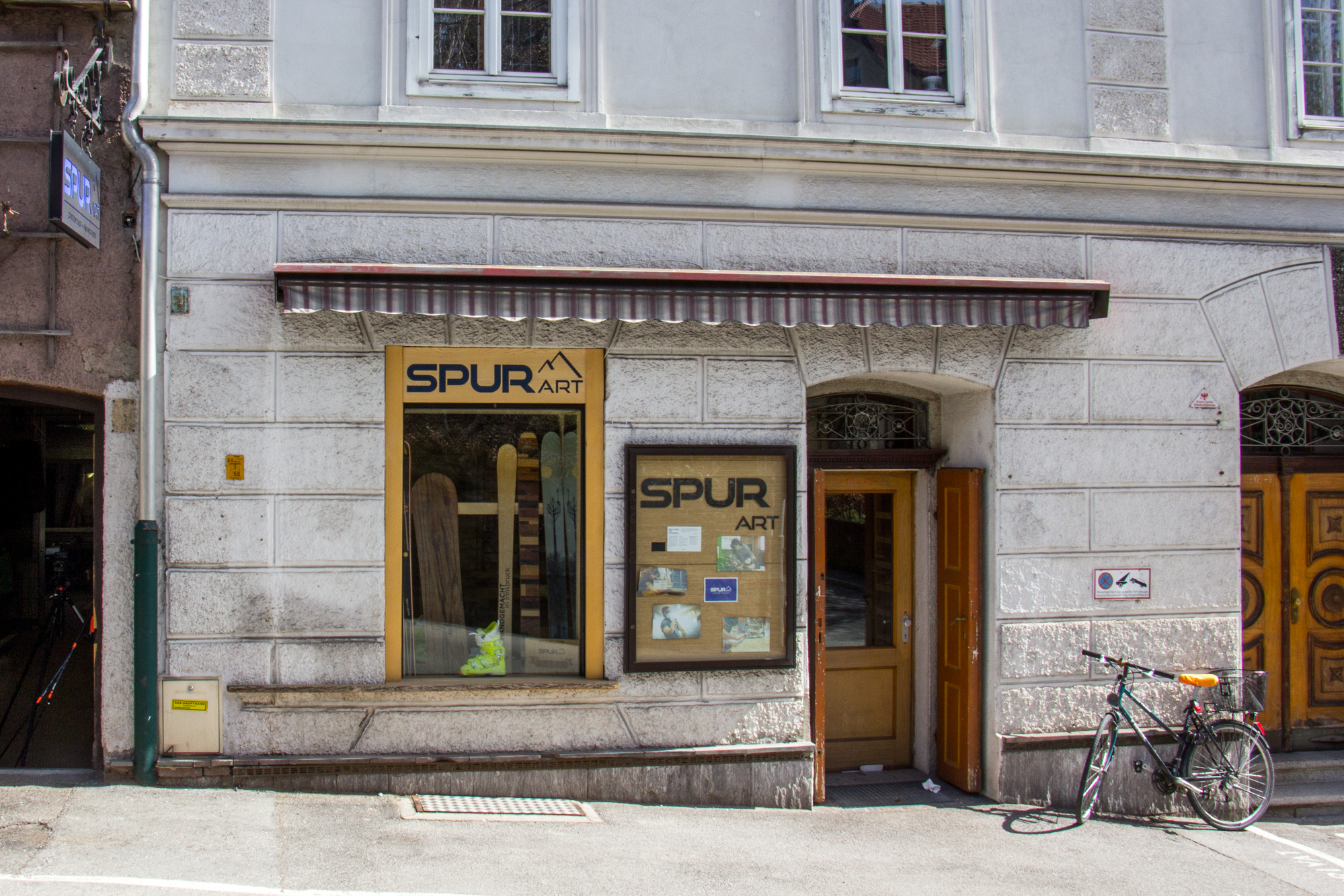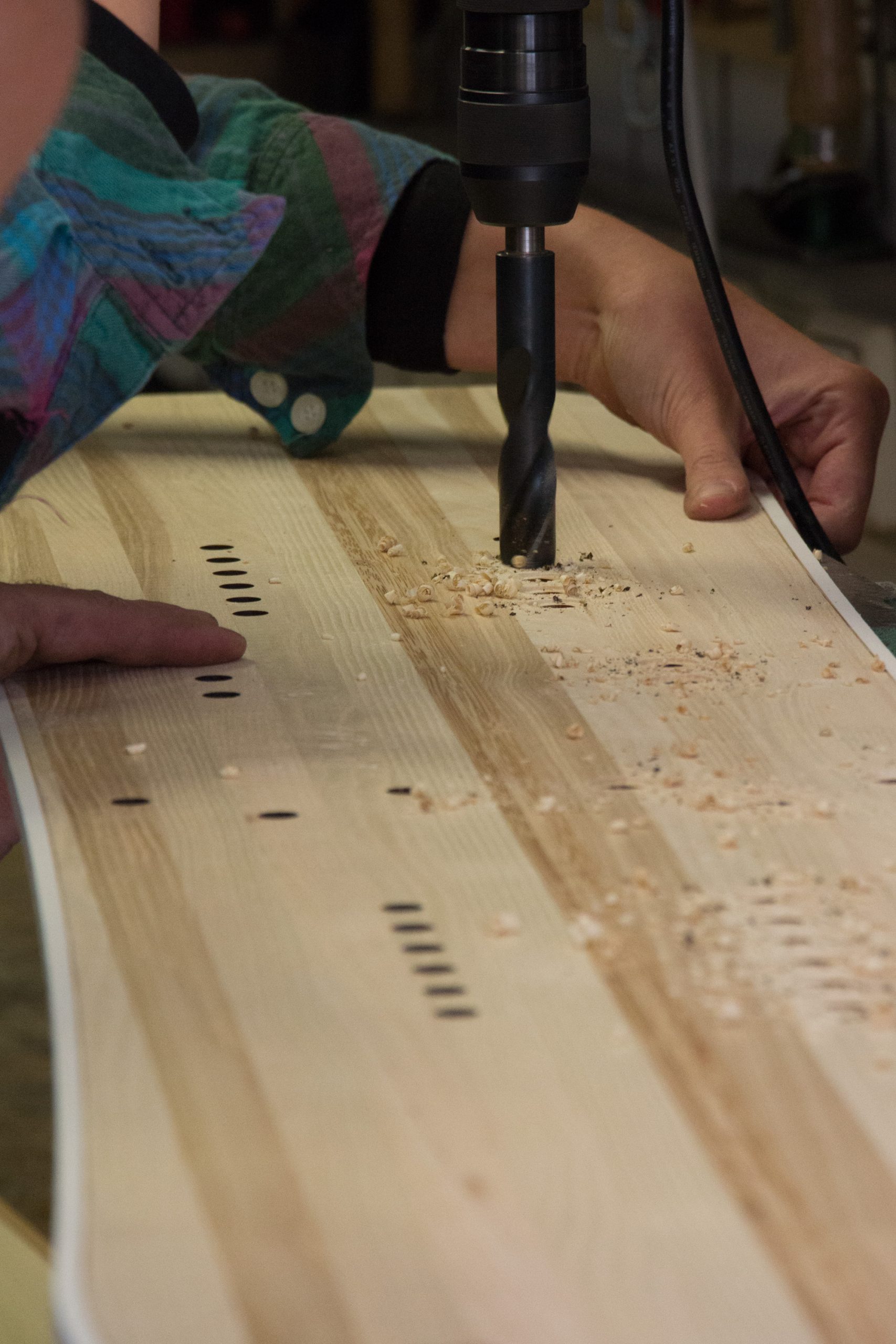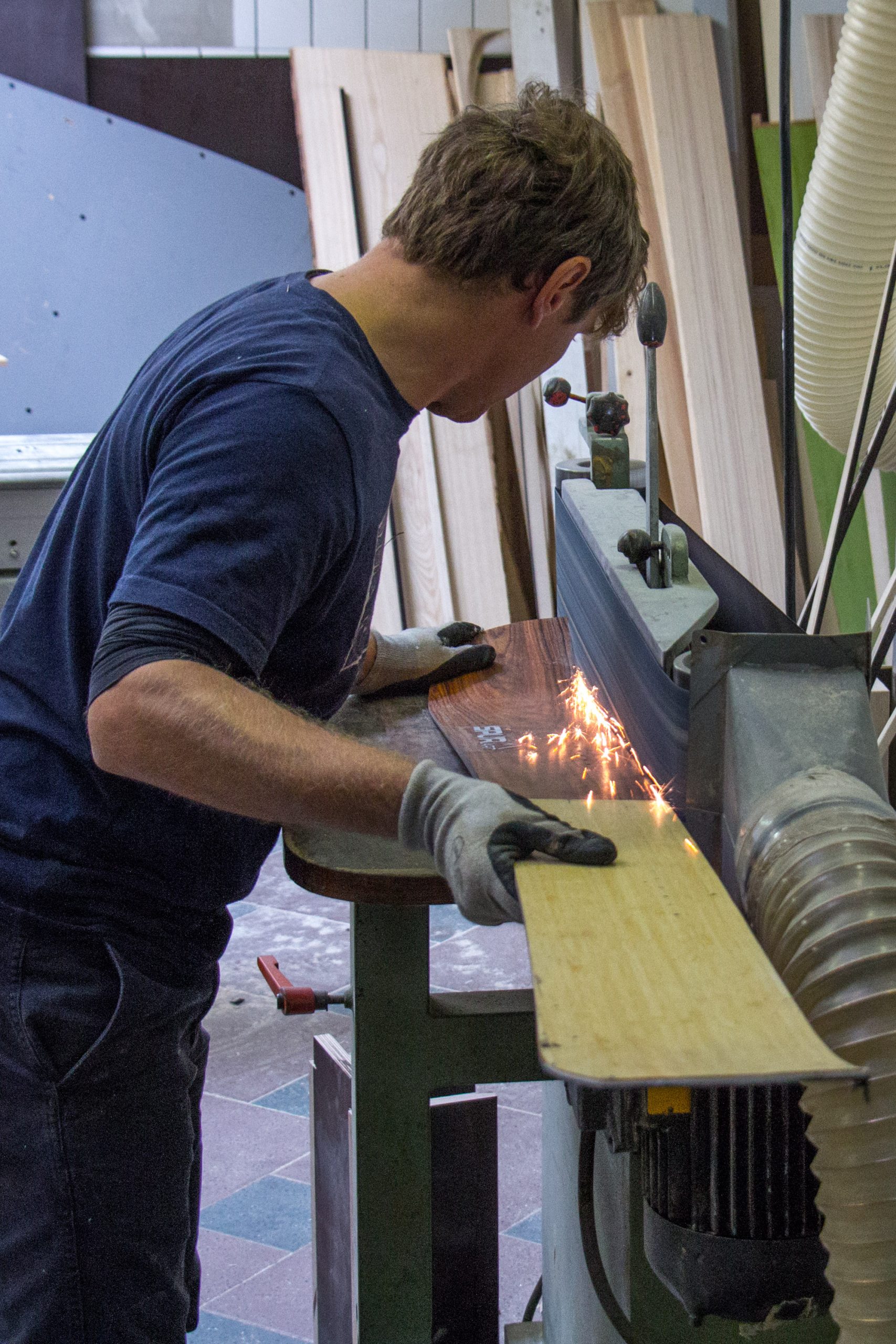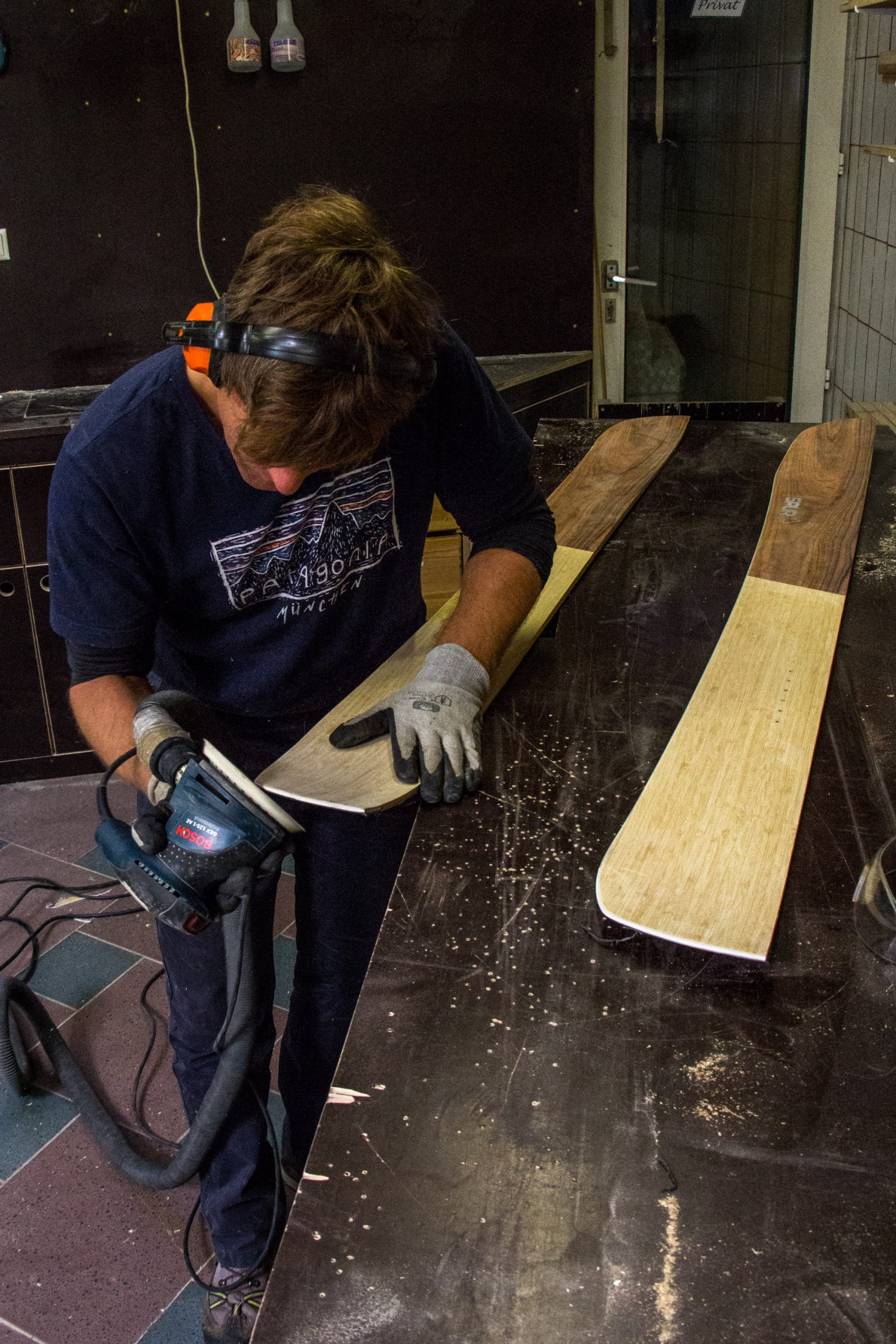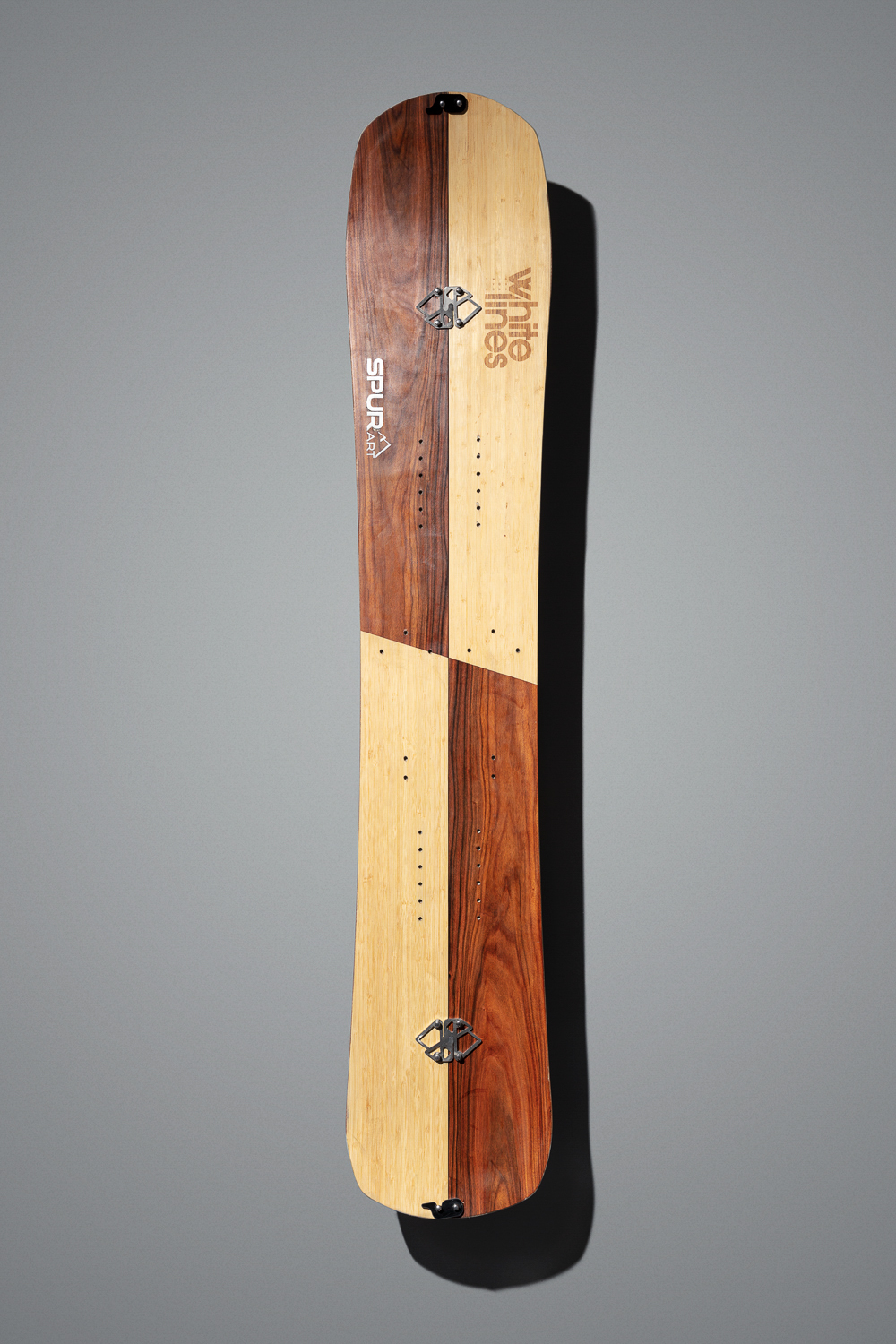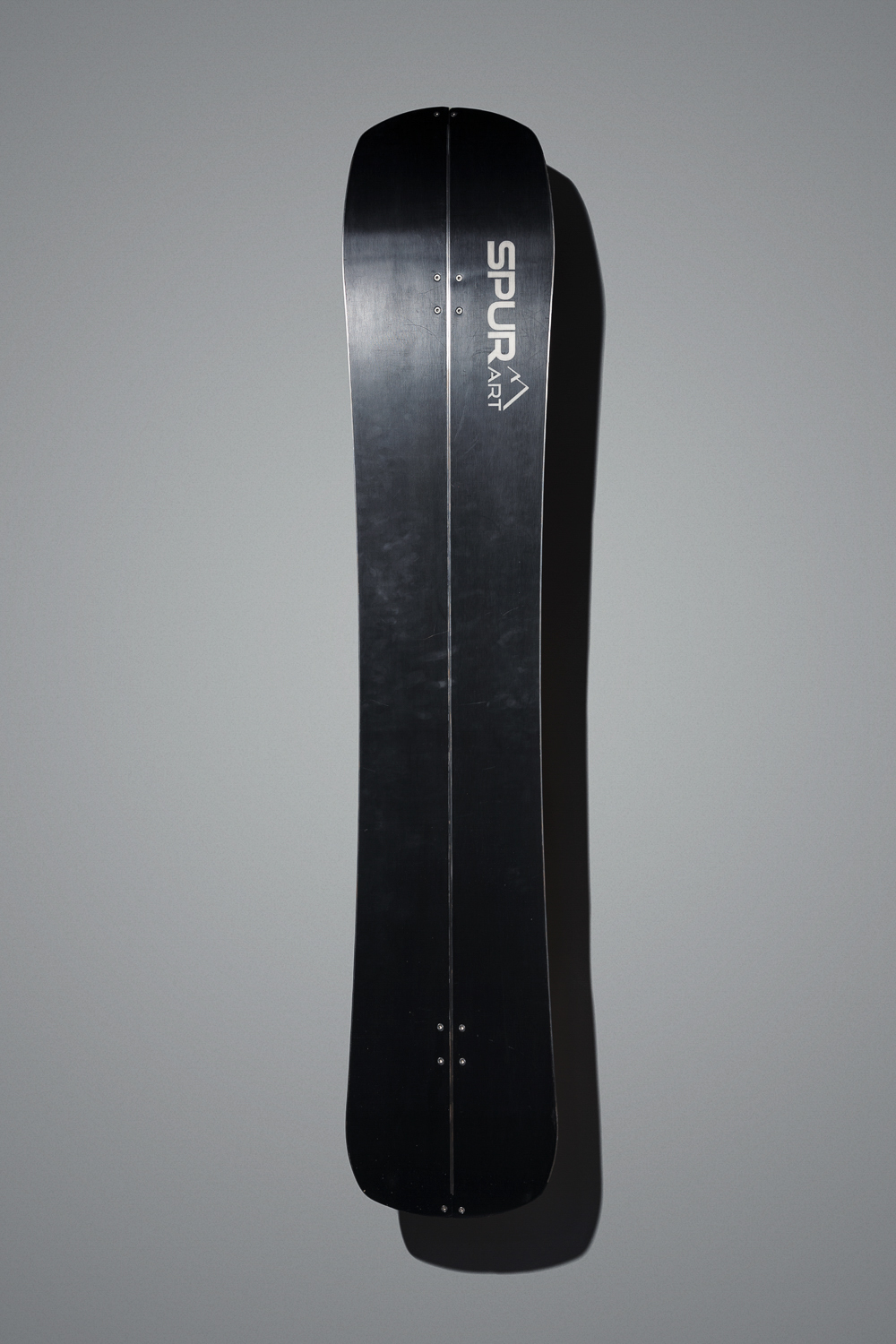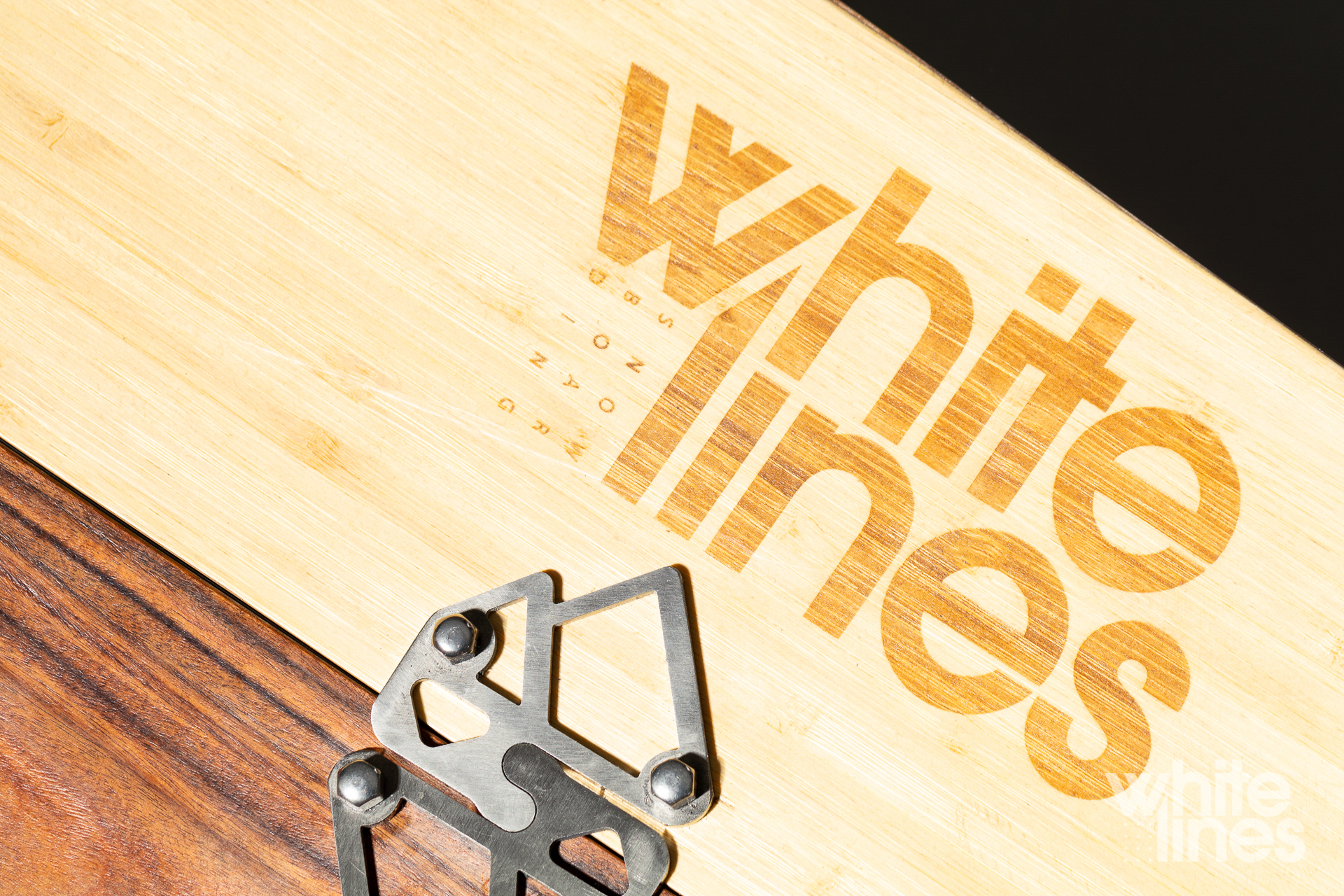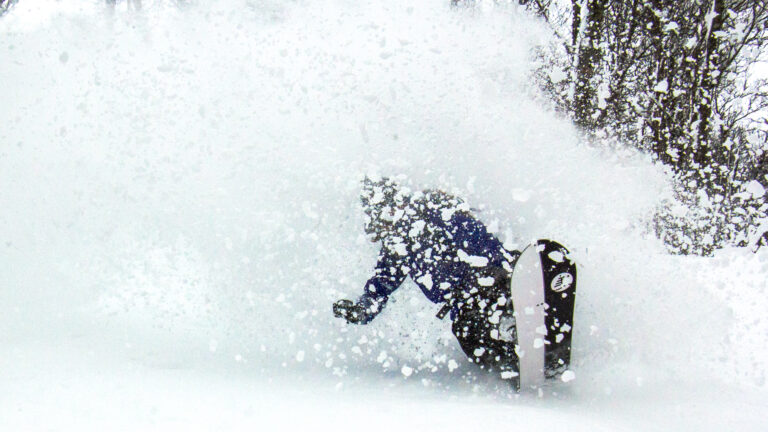Video: Sam McMahon. Photos: Duthie
If anyone ever tells you that there’s no better feeling than tearing the plastic shrink-wrap off a brand new snowboard, they’ve clearly never been to SPURart. Tucked away on a steep Innsbruck side street, this custom ski & snowboard workshop will build you the perfect tailor-made deck (or better yet, help you put it together yourself).
SPURart is powered by infectious enthusiasm and impossibly strong coffee, both of which are regularly topped up by founder Michi Freymann. While doubtlessly a passion project – “No-one’s ever going to get rich doing this!” is one of Michi’s catchphrases – the reputation of the brand has been growing steadily.
In winter the workshop is a hive of activity, taking customers through ‘build-your-own’ sessions on weekends and producing made-to-order equipment through the week (but if there’s been a dump, don’t expect to find anyone there until the evening).
“Their tools of the trade run from pencils and masking tape right up to a custom-built, computer-controlled laser”
We paid them a visit last spring in order to learn about their process the best way one can: by making a custom Whitelines splitboard. Over two days Michi and his assistant Sophie walked us through the whole process, their tools of the trade running from pencils and masking tape right up to a custom-built, computer-controlled laser.
During a break in the proceedings, we sat down with Michi to find out what makes him tick.
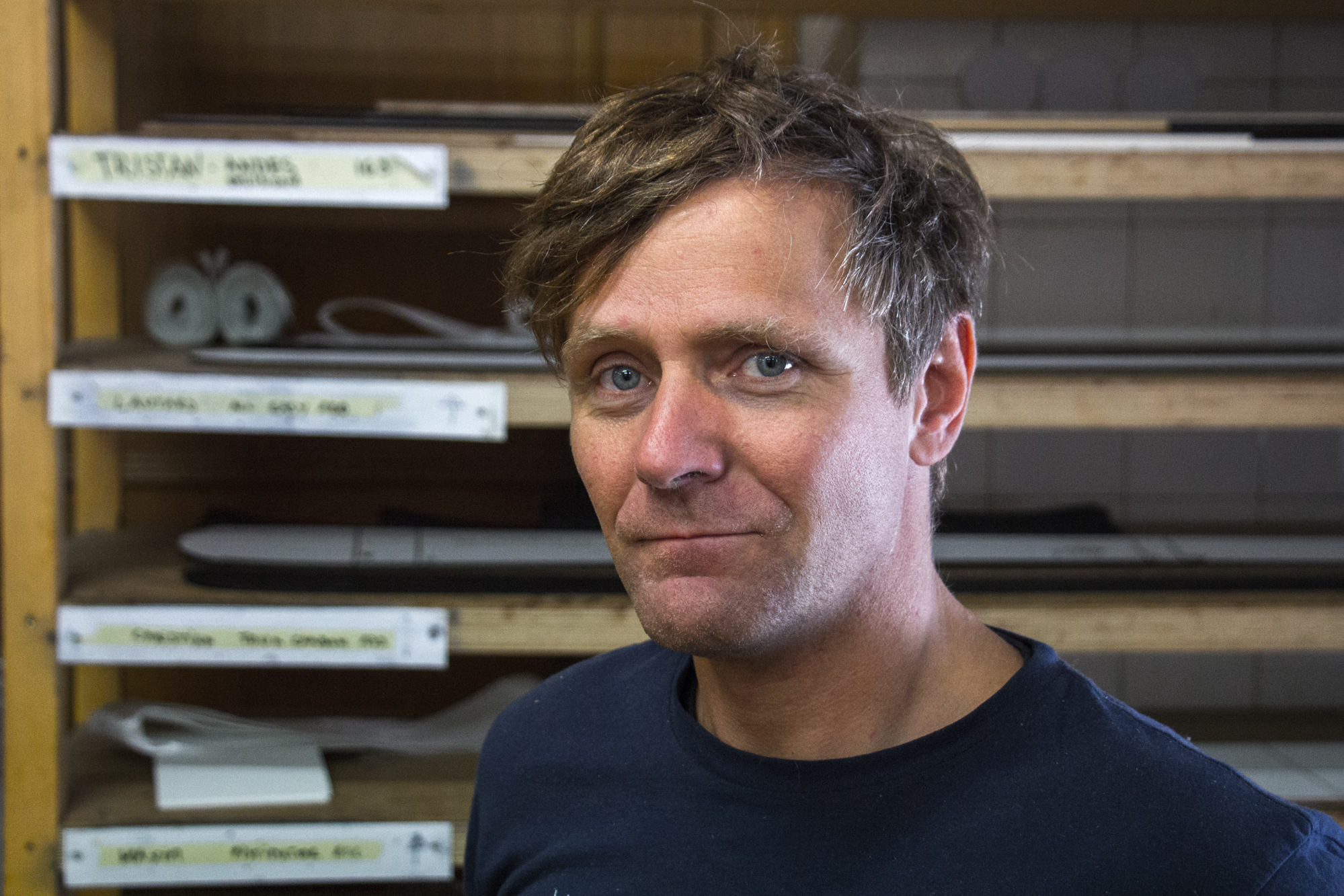
Typically, how do your customers find you?
It’s becoming more word of mouth now, but when we started we got good media coverage – we’ve had journalists come by about once a week. Now a lot of people see our website because they’re interested in ‘build your own’ stuff and are searching for it, so they find us that way.
When did you start?
We started eight years ago now. I opened it up two or three weeks after I had the idea. I injured my ACL and got some insurance money, and spent it on the workshop. I started it, but I didn’t want to do it by myself – I wanted someone to share the sorrows, and the good days! I knew Peter [Michi’s business partner] from ski testing; we rode for Rossignol together.
“Innsbruck has so many freaks living here… eventually you find somebody who’s a snowboarder but also fully into robotics!”
Why ‘SPURart’?
At the start there wasn’t really time to find a proper name, so I started with Freymann Sports, because that’s my last name. I didn’t like it at all, so I thought more about it over the next summer.
‘SPURart’ means ‘the way of the trail’ in German, or ‘the art of the trail’ – and you know, when i look at the mountain I can tell the next day which of my friends rode which line. So you see? We try to give people what they really want, and produce it in line with their demands, so I just thought that’s the right name.
How many boards would you make in a week at your busiest time?
Fifteen. If someone orders a custom board, we take measurements, talk about the shape, plan it, then we produce it during the week. For the weekend workshops we have the consultation two weeks beforehand to be able to get stuff ready, like the bases and cores. Then we can do the board in those two days.
We can have eight at once, taking people by the hand through the step-by-step system. We also do a lot of group work – we can take someone who is not that skilled and put them with someone more experienced. That works quite well.

